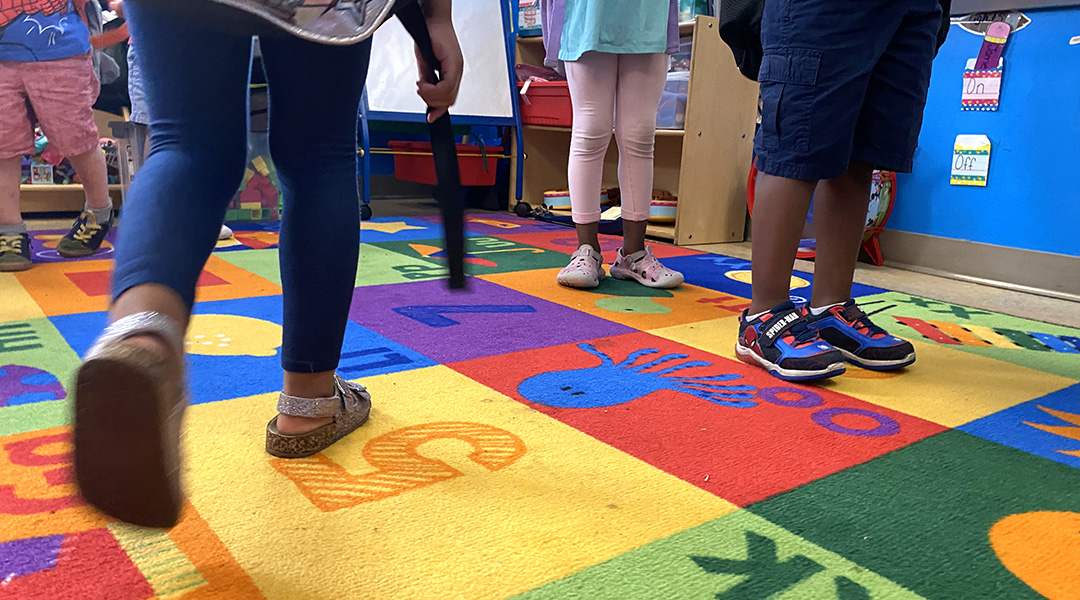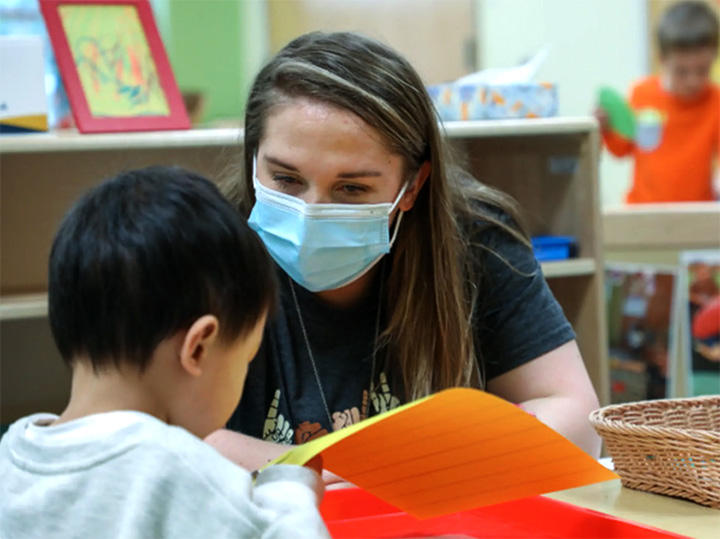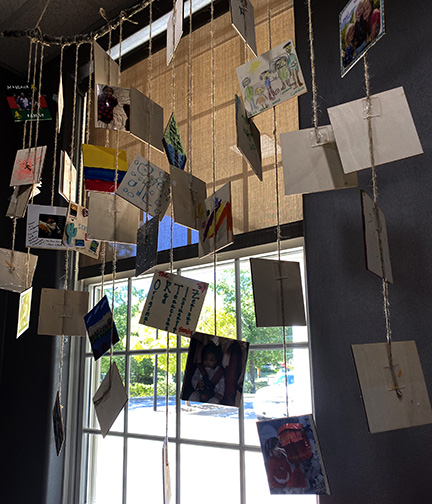The SC Building Blocks Grant is helping St. Paul’s Lutheran Child Care Ministry keep doors open. Young kids attending the ministry ran to patiently wait in line with their backpacks on until the assistant director said it was time to go outside. Photo by Reagin von Lehe
Some Columbia daycare centers are struggling to keep their doors open amid pandemic-induced staffing shortages.
Now, the federal government is providing money for a SC Building Blocks grant to stabilize the industry. The grant has kept facilities open, as they can receive possibly tens of thousands of dollars to recover from the effects of the pandemic. The state Department of Social Services began taking applications June 1. Businesses have until Sept. 30 to submit requests.
The child care profession already offered less-than-livable wages, few benefits and demanding schedules for workers. COVID-19, which required some people to remain at home with their own children, was the last straw that drove some away.
Many child care employees never returned. Competitive wages in education and other office jobs make it difficult for businesses to find and keep employees.
Wells Fargo & Co. estimated that 460,000 families nationally are struggling to find alternatives, forcing some parents — especially women — to leave the workforce. A company report goes on to say, “No industry is as central to working women as childcare.”
“This is the first time that childcare has been seen as such an important part… of the workforce,” said Tyniko Burrison, director for the University of South Carolina’s Bright Horizons day care center. “If you don’t have anywhere to take your children, then individuals can’t go back to work. Although we know this, now I feel like the world has seen how important an educator’s job is.”
Bright Horizons is short-staffed, Burrison said. The waiting list for 2-year-olds, for example, is usually just a few weeks. Now, parents have to wait six-to-eight months.
“Especially when you want to have great care, [we] can only have a certain amount of infants in the classroom, and those spots fill really quickly,” Burrison said.
She thinks the shortage has had a “two-fold” cause. COVID-19 precautions forced centers to temporarily close so employees weren’t paid regular wages. Once the country began opening back up, workers either already had left the profession, or they left when they realized their workload exceeded their pay.
“I would say there’s a lot of teachers that are burnt out,” Burrison said. “I always say that you must take care of yourself in order to be able to best care for children.”
Hermania Harper, director at St. Paul’s Lutheran Child Care Ministry on Columbia’s Bull Street, says these grants are essential for the church to continue providing child care services.
“Things are getting more expensive, and so we’re trying to look out for the parents in that aspect, and the grants have allowed us to keep our costs low,” Harper said.
Although the grants are beneficial for the industry and working parents, some people are still struggling.
Shanal Corin, manager for 5 Star Academy in West Columbia, said the daycare has been able to stay afloat. But the staff had to shave two hours off the building’s operation.
She’s still trying to find more help.
“But I mean, [the grants] don’t help with getting employees,” Corin said. “Nowadays it’s gotten ridiculous. … It’s very competitive now, and we’re trying to keep up, like offering child care to the staff.”
Child care providers who worked throughout COVID procedures, long hours, and stagnant wages are committed to their facilities.
Harper takes a break and eats her lunch with her phone in hand, with the ringer turned all the way up in case anyone calls for extra help.
“I’m not gonna say it’s not trying at times,” Harper said. “I was ready to interview two candidates this morning and both were no-shows. I’m not sure why. So that can be disheartening, but our main goal is to take care of the students that we have right now. And as long as we focus on the main goal, then that carries us through.”
A child care provider at Bright Horizons helps a young student with arts and crafts. Photo contributed by Bright Horizons at USC
Families’ photos and notes hang in the Bright Horizons at USC window. Photo by Reagin von Lehe
A Bright Horizons employee helps a toddler play with building blocks Photo contributed by Bright Horizons
Bright Horizons applies for grants in order to properly care for children and keep costs for parents low. Photo by Reagin von Lehe






